
Japanese Zen gardens embrace simplicity, harmony, and mindfulness. Unlike traditional gardens focused on lush planting or colourful displays, Zen gardens use minimalism, symbolism, and natural elements to evoke peace and contemplation. Whether you have a spacious yard or a compact outdoor corner, this style is perfectly adaptable to any size, transforming your space into a serene retreat.
Characterised by raked gravel, carefully placed rocks, subtle greenery, and thoughtful structure, Zen gardens cultivate calm through restraint. Let’s explore how you can create your own Japanese Zen-inspired sanctuary.
Zen garden design is guided by geometry and purposeful placement. Just as contemporary gardens use sharp straight lines, Zen gardens rely on balance and asymmetry to evoke nature in an abstract way. Gravel or sand represents water, while rocks signify mountains or islands.
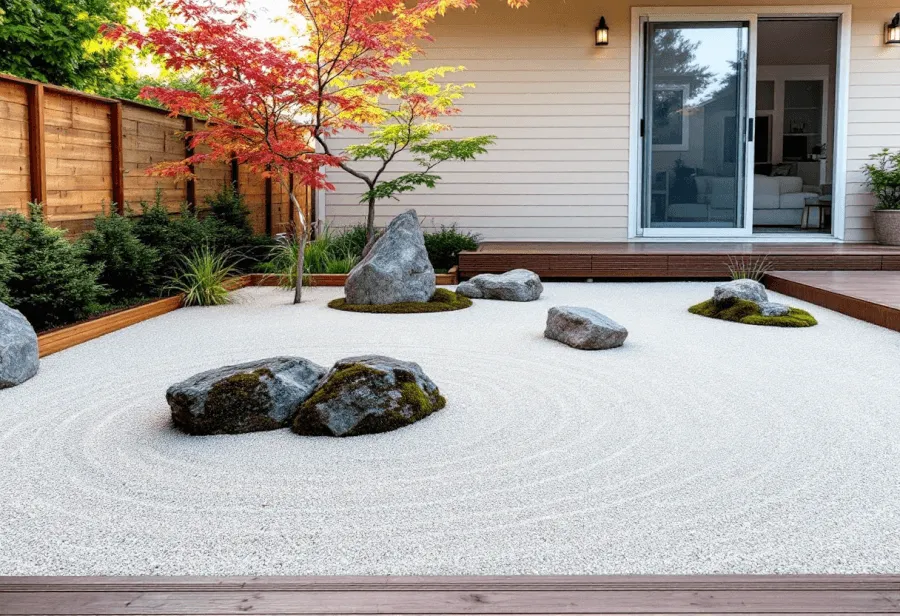
Start with your garden’s boundary. Simple timber panels or bamboo fences create a neutral backdrop. Choose natural wood tones or muted stains—avoid bright colours that distract from the garden’s meditative intent.
Rounded forms are also essential. Unlike strictly straight-edged contemporary spaces, Zen gardens often feature circular gravel arrangements, softly curved stepping stones, or round moss patches. These subtle curves introduce flow and embody the concept of ensō—a Zen symbol of enlightenment and unity.
Raked gravel or sand is one of the defining elements of a Zen garden. When raked into patterns—such as straight lines, ripples, or concentric circles—it symbolises flowing water or waves. The act of raking itself is a form of meditation, encouraging focus and calm.
Large stones act as focal points, representing mountains or spiritual anchors. Their placement should feel intentional yet organic, blending naturally into the landscape.
In Japanese Zen gardens, materials are selected for their simplicity and connection to nature.
Wooden walkways, bamboo fences, and stone lanterns (called tōrō) bring subtle elegance without overwhelming the space. Unlike contemporary gardens where concrete is common, Zen gardens prioritise natural textures that age gracefully with time.
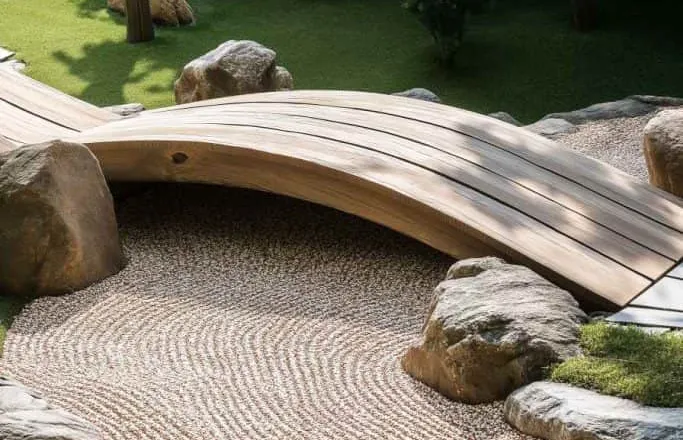
Avoid brightly painted features. Instead, allow patina, weathering, and natural textures to reflect the passage of time—a concept known as wabi-sabi, which celebrates beauty in imperfection.
Much like contemporary pergolas that create a relaxation zone, Zen gardens include quiet corners designed for stillness. These may be simple wooden benches beside raked gravel areas or a platform overlooking a tranquil composition of rocks and moss.
Seating should be unobtrusive—think low wooden benches, stone platforms, or tatami-style decked areas. The idea is to create a peaceful spot for meditation, tea rituals, or simply appreciating stillness.
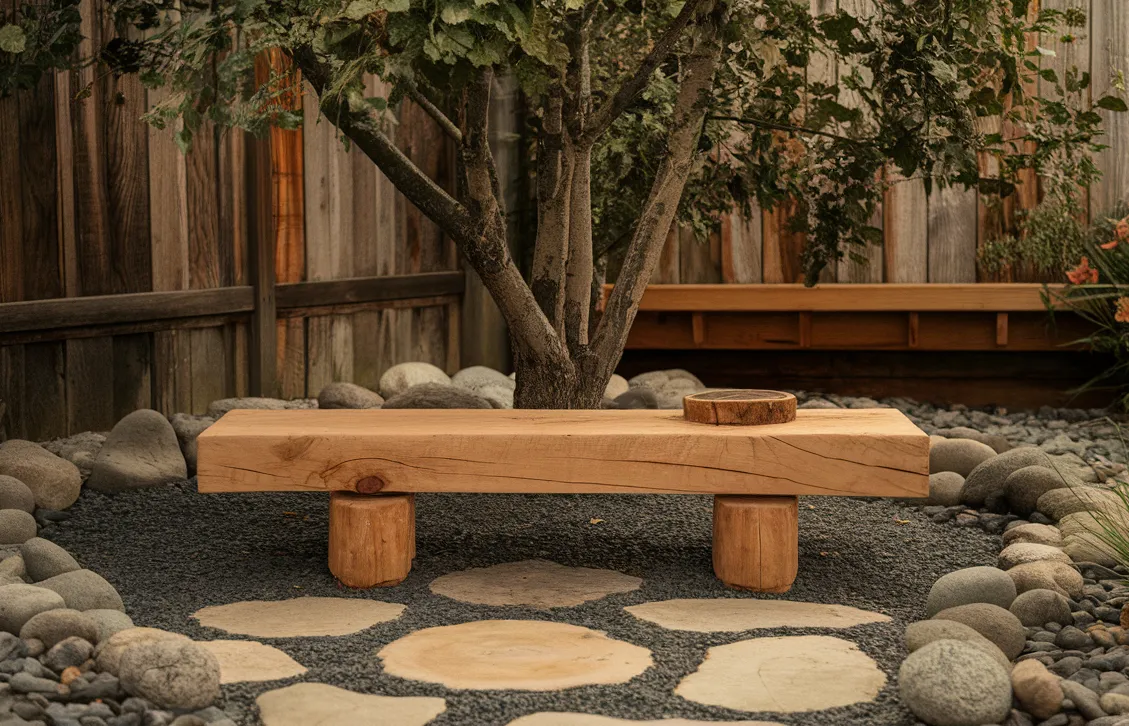
Planting in Zen gardens is minimal and meaningful. Rather than a colourful display, plants are used selectively to express calm and seasonal change. Stick to a restrained palette of greens and textures rather than bold flowers.
There are two main approaches:
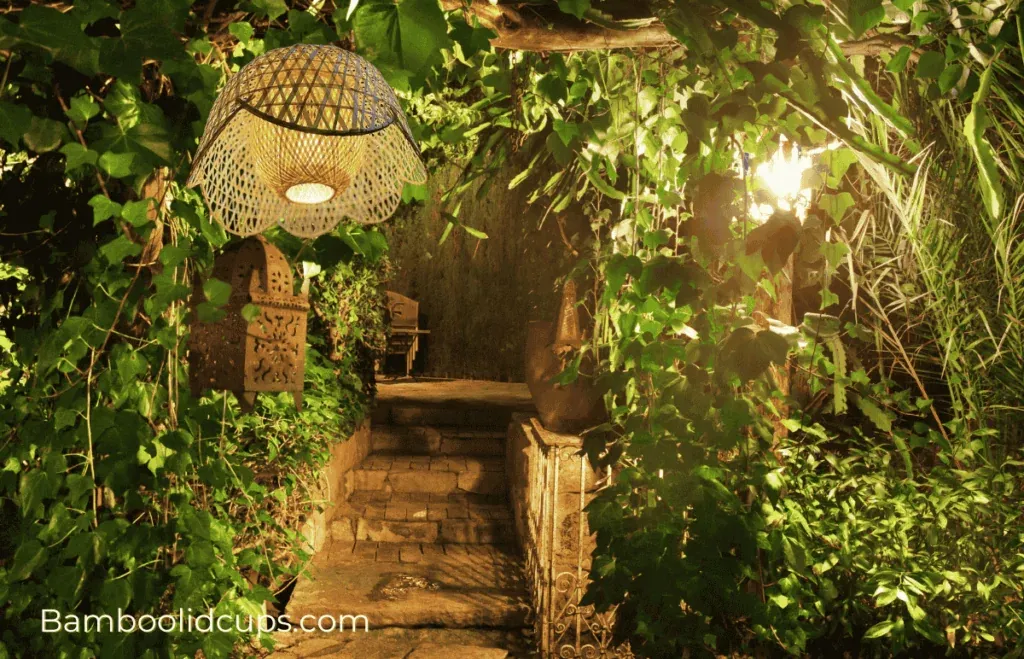
Bamboo offers gentle movement and the soft sound of rustling leaves in the wind, promoting a contemplative atmosphere. Use clumping varieties to maintain control and plant them along borders or near seating areas to create privacy and vertical interest.
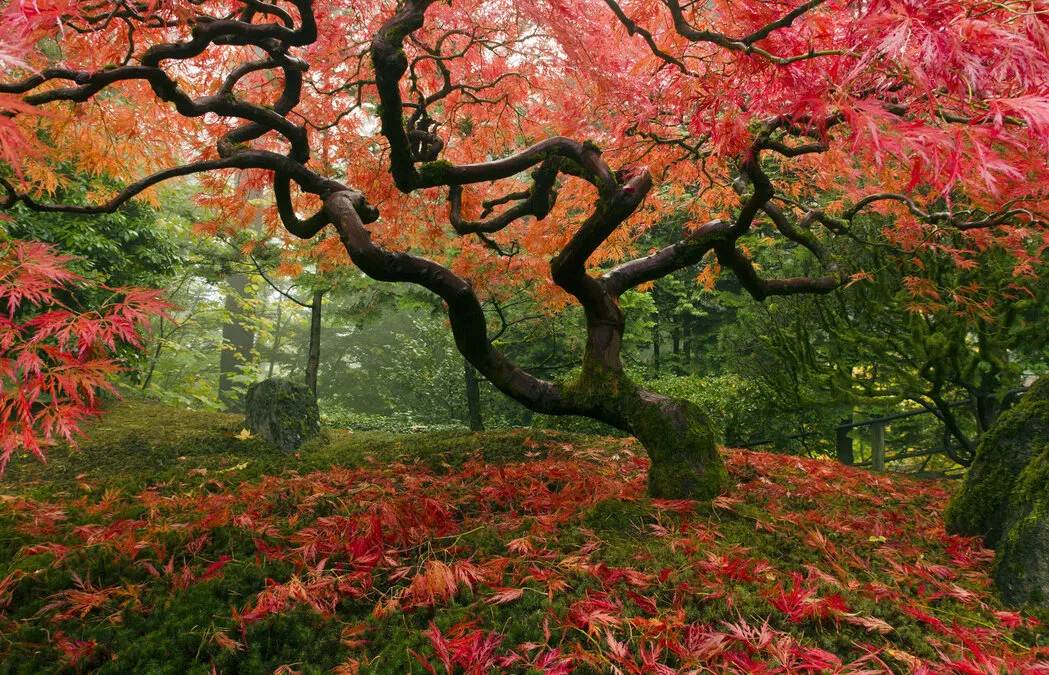
With delicate leaves that change colour seasonally, Japanese maples bring quiet elegance. Their fine branching structure makes them striking focal points without disrupting the garden’s calm aesthetic.
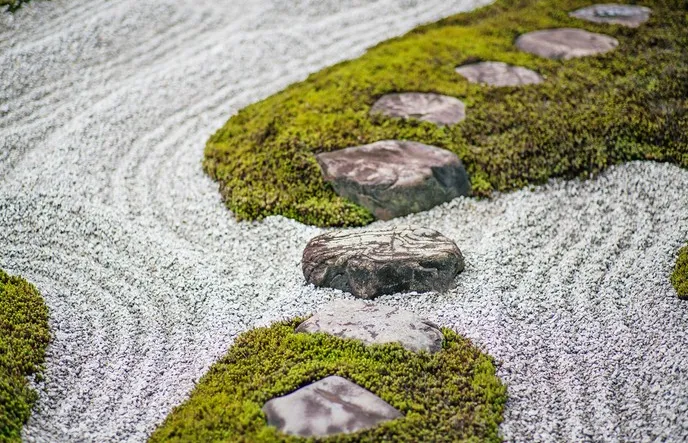
Moss is often used instead of grass, thriving in shaded areas and creating a lush, velvety carpet. It enhances serenity and absorbs sound, reinforcing the quiet tone of the garden.
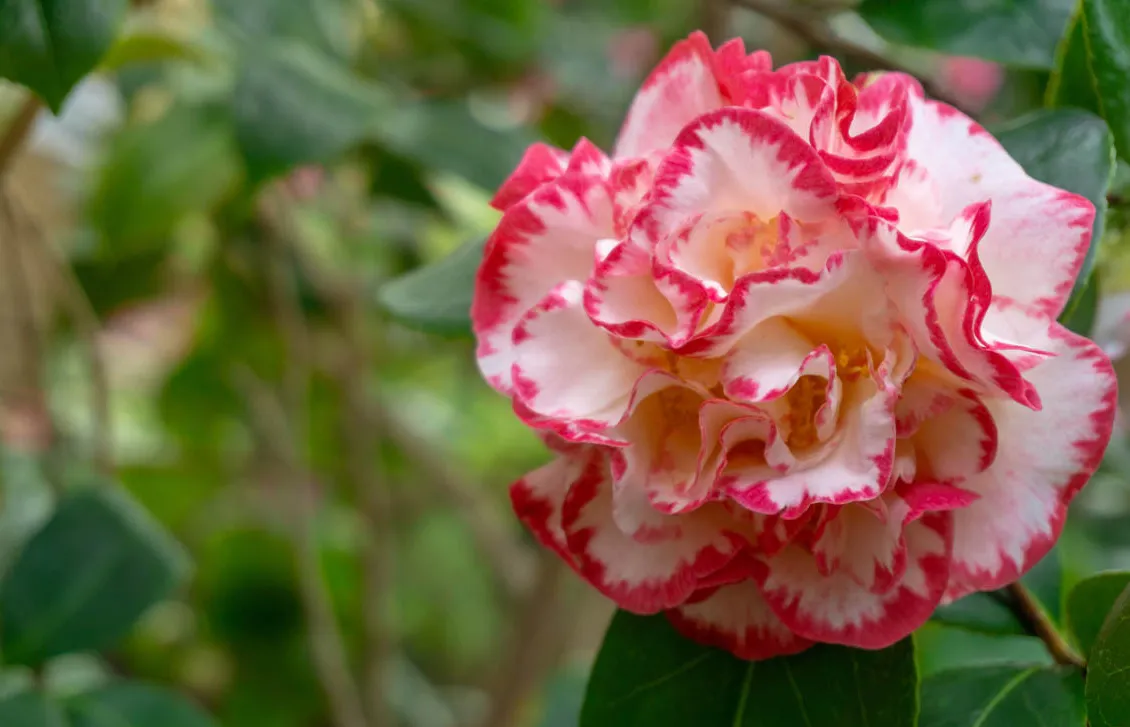
Pruned into rounded or cloud-like shapes, evergreens contribute structure and year-round tranquillity. Their controlled forms reflect the discipline and mindfulness central to Zen philosophy.
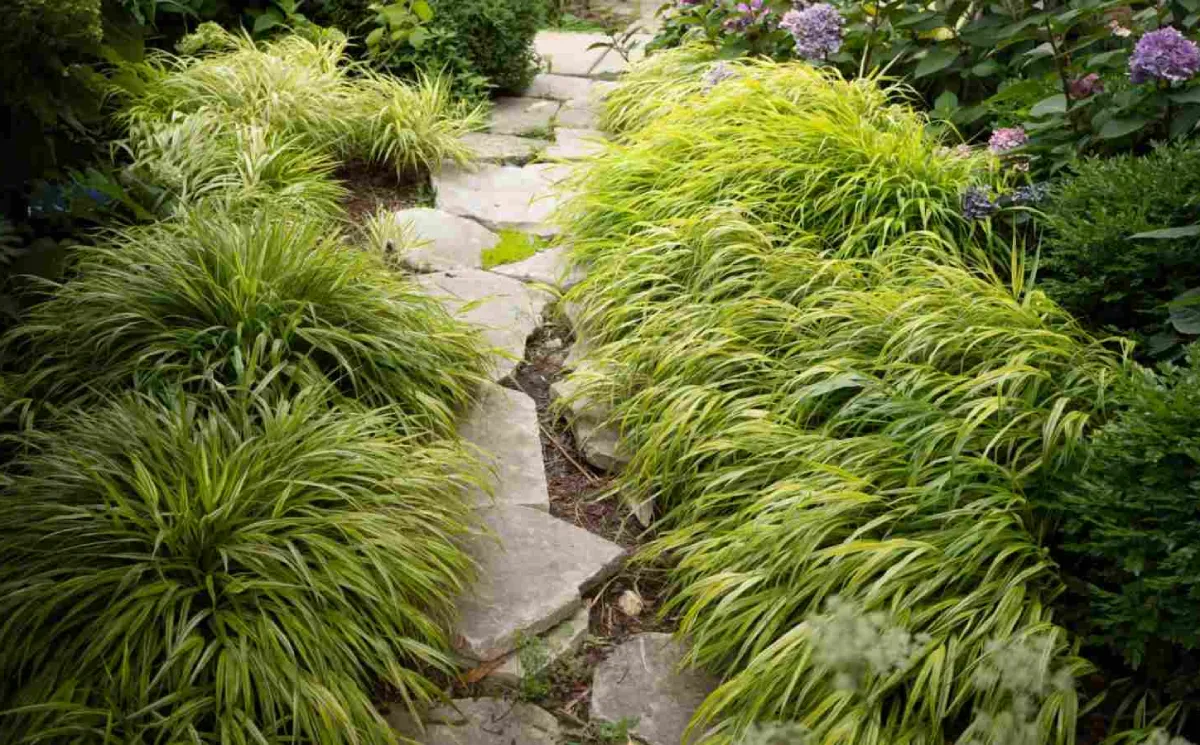
Soft, flowing ornamental grasses bring movement without adding clutter. Their pale green tones complement rocks and gravel while maintaining a minimal feel.
Where a contemporary garden may use flowers like Alliums and Salvias, Zen gardens rely on subtle seasonal shifts. The gentle bloom of a single cherry blossom tree or the autumn flare of an Acer is enough to evoke emotion without overwhelming the space.
Recommended seasonal highlights:
A Japanese Zen garden can cost from £100–£500 for a small DIY setup to £2,000+ with professional installation. To stay on budget, prioritise core elements that define the style: gravel or sand for the “water” surface, a few carefully placed large rocks, and minimal plants like bamboo, moss, or a small Japanese maple. Simple bamboo screens or wooden borders add structure affordably.
To maintain gravel raking patterns in a Zen garden, a wide-toothed wooden or metal rake is typically used, with wooden rakes preferred for softer, more refined designs. The technique involves applying even pressure and raking from the edges inward to create smooth lines or ripples
Zen gardens are deeply influenced by Zen Buddhist principles such as simplicity (kanso), tranquility (seijaku), and wabi-sabi, which embraces imperfection and the passage of time. Their layouts are designed to encourage meditation and mindfulness, with rocks symbolising mountains or islands and gravel representing water or the flow of life.
© Rescapeai 2024
[email protected]